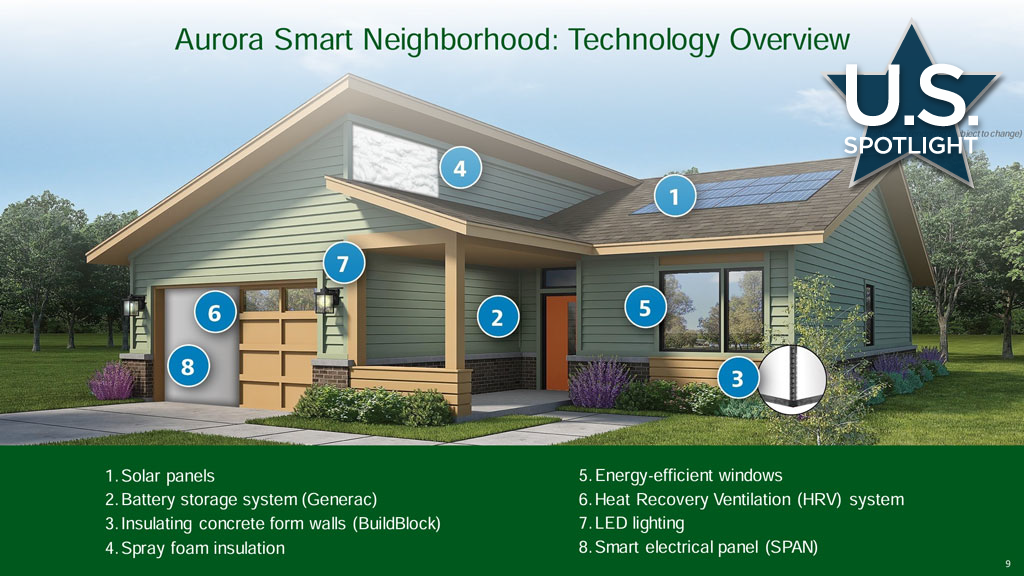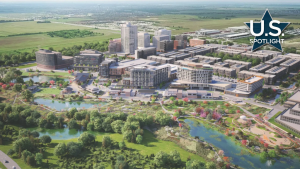This residential development has two firsts.
It will be the first large affordable net-zero subdivision in America. And it will be the first large scale Habitat for Humanity project.
Nicor Gas, a northern Illinois utility with 2.3 million customers, has teamed up with the non-profit to construct 17 homes on the west side of Aurora, a Chicago exurban city.
The development takes advantage of the City of Aurora’s growing cyber infrastructure to link a new community-wide electrical grid to help power the 1,250 to 1,500-square-foot three- and four-bedroom homes, construction of which is expected to begin this summer.
The subdivision’s name is Habitat Green Freedom.
Typically, Habitat has built homes a few at a time but nothing quite this large. A second community that will have 13 homes further north will also be powered the same way.
Nicor is owned by Atlanta-based Southern Co. Gas, and the Illinois projects parlay so-called smart neighborhood efforts in the parent company’s southern states.
“The first one was in Alabama and the whole premise is to partner with the developer to really understand, research and demonstrate different technologies to gain a better understanding of how we can better serve customers,” Meena Beyers, Nicor’s vice-president of business and community development, said.
Nicor watched what was taking place with these “micro grid” neighborhoods and thought it could adapt the model to its own market as the company moves to a 2050 net-zero goal.
“We also have a best-in-class energy efficiency program in Illinois where we’re constantly trying to research and learn more about emerging technology,” she said.
But the goal is not just achieving carbon neutrality for its own sake but how this can be done “reliably and affordably” taking into consideration that Illinois has a cold climate.
Working with the Colorado-based U.S. Department of Energy’s National Renewable Energy Laboratory (NREL), Nicor came up with technologies that could achieve energy efficiency “to study and simulate using a year of actual weather,” Beyers said.
These include “really advanced” insulated concrete form walls, rooftop solar, backup generation – either battery or gas – energy efficient windows, heat recovery ventilation, energy efficient home technologies including smart thermostats and electrical panels. It also includes natural gas heat “which of course is the norm in Illinois,” she said.
And while Nicor was doing this research Habitat was planning a subdivision.
So, wanting to deploy these new technologies it hooked up with the non-profit, Fox Valley Habitat for Humanity, “because we wanted to do it in affordable housing” keeping with its research goal of providing affordability while being net neutral.
Once installed and the housing occupied, Nicor will monitor the subdivision’s technical performance “so we can better understand how the energy is used because it’s a research and development project for us too,” Beyers said.
Habitat is known to employ families that are chosen to live in the houses but the specialized technology that will be installed in the buildings won’t provide any unusual challenges to the volunteers.
“We’re working with industry experts for those installations,” Beyers said. “And generally, the volunteers are doing some of the standard work that happens at Habitat homes like the building of the shell.”
She said that one of the exciting aspects is that construction will be using BuildBlock Insulating Concrete Forms (expanded polystyrene foam blocks with reinforced concrete for long lasting and energy-efficient walls) “for which they actually provide training.”
The forms combine energy efficient materials while making installation relatively easy.
For example, built-in insulated web studs are located every six inches, there’s a self-draining interlock design to prevent ice, snow and frozen water to accumulate during construction, and there’s tongue and groove interlocks on the end of each block.
“It’s a Habitat favorite (material) to use because it’s very volunteer friendly,” Beyers said.
Despite being a fossil fuel, natural gas will play an integral role in Nicor moving to net neutrality.
Beyers said Nicor modelled that using both gas and electric with the NREL, “and how the components work together to achieve net-zero and we’ve also third party validated” the design.











Recent Comments
comments for this post are closed